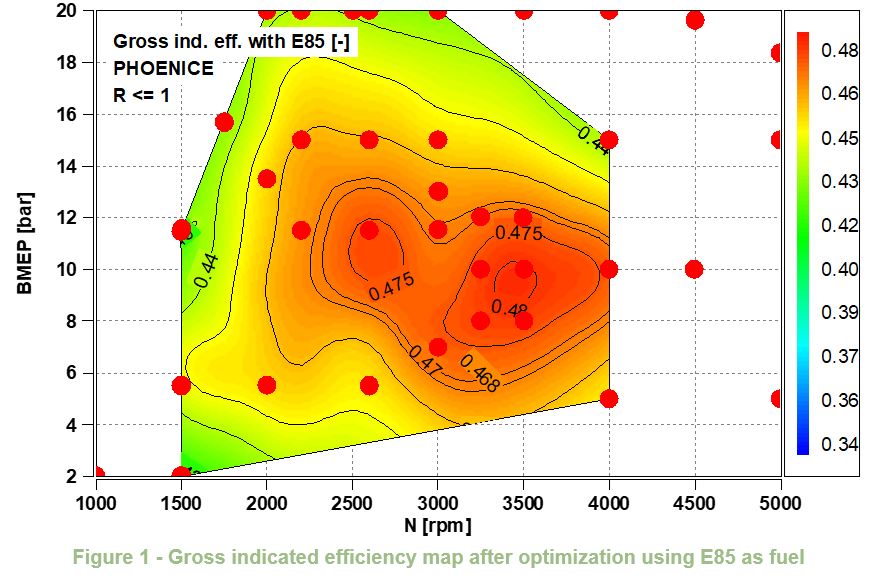Steady-state warm calibration of the PHOENICE prototype engine was conducted at relevant engine load points on IFPEN’s engine test bench. After calibrating with E10 (reference) fuel, we also used an alcohol-based fuel. In our case, E85 (containing 85%v of ethanol) was chosen.
Tests were performed over a wide area to assess the potential of E85 in reducing the fuel consumption and of pollutant emissions. The calibration with E10 (reference) served as the baseline. Only two parameters were optimized with E85: Spark advance, adjusted to account for the reduction of knock propensity, and VNT position, adjusted to consider the efficiency variation at a given lambda value.

The maximum gross indicated efficiency achieved is 48%. A comparison with E10 (reference) reveals a gain ranging from 0 to approximately 6 points of Brake Thermal Efficiency (BTE). The maximum gain in BTE is achieved for high load / low engine speed operating points. The significant reduction in knock propensity with E85 allows for a better combustion phasing compared to the reference fuel. At low loads or high engine speeds, E85 leads to improved BTE due to lower heat losses. The high latent heat of vaporization of ethanol contributes to reducing the temperature in the combustion chamber.


